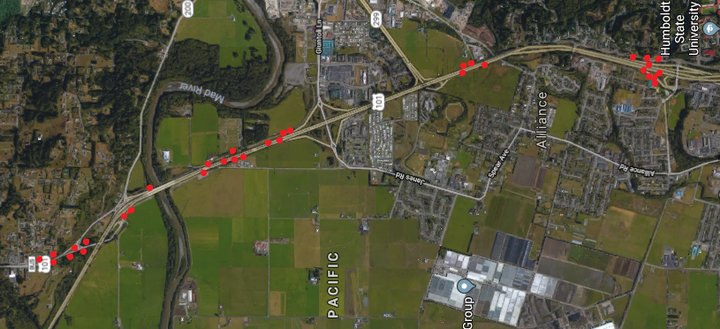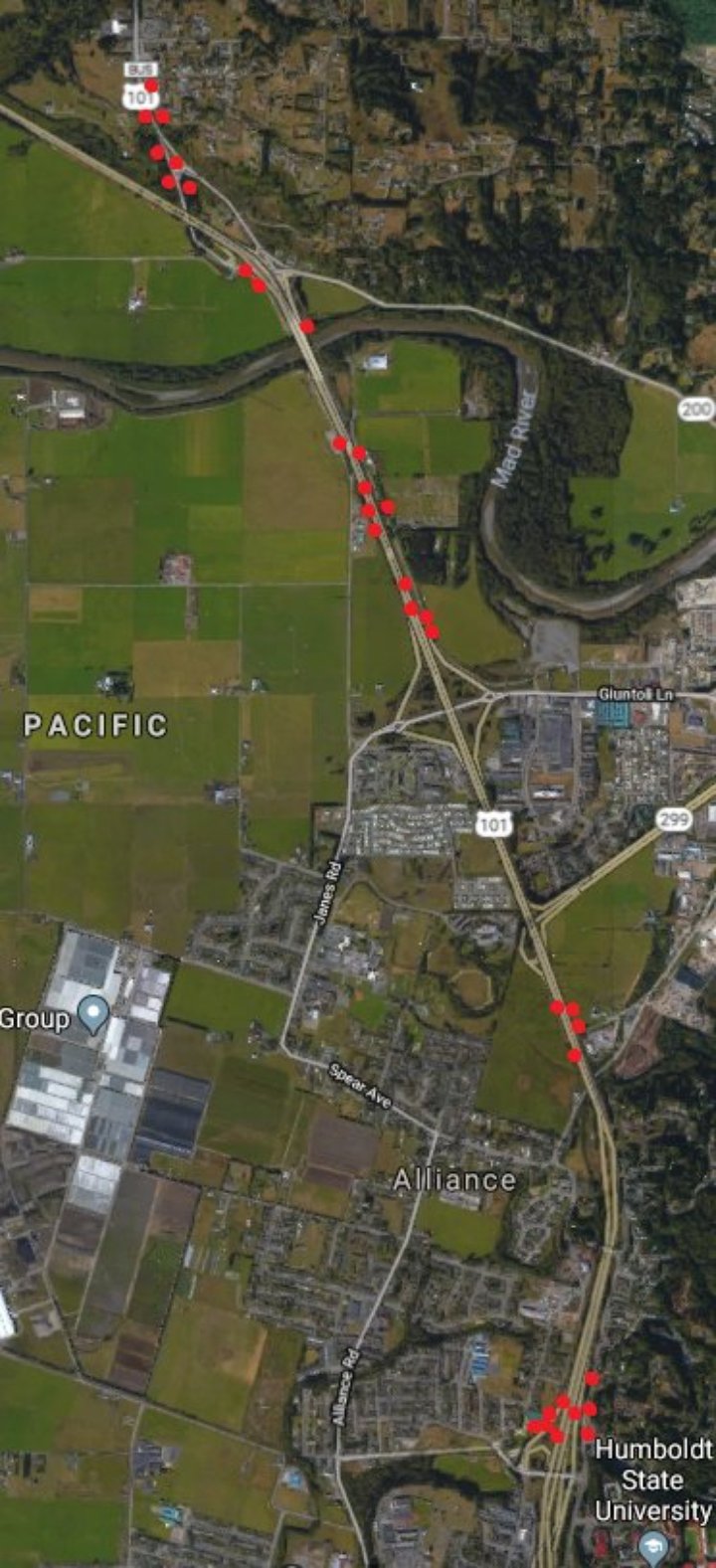[Editor’s note: Today, the Outpost is thrilled to launch the internet’s newest feature: Student Science! Are you a high school or college student who has done empirical research on some little-known aspect of Humboldt County’s people, places, flora, fauna? Write up a precis and share your work with the mighty Outpost audience! Email news@lostcoastoutpost.com, and put the words ‘Student Science’ in the subject line. Professors welcome too, I guess.
And now: Brittany Rachels on roadkill.]
###
It
is a familiar sight to be driving down the road to Arcata in the early
morning traffic and see at least one dead raccoon, opossum or
some other creature that tried to brave the road.
Last year in California, $276 million were spent on animal-related collisions over the course of 6,000 accidents, reports the UC Davis Center for Road Ecology. The monetary-related data collected ranged from human funeral costs to CHP and Animal Control clean-up. These numbers only include collisions that were reported, however. Incidents that do not include car damage are rarely reported. They more often include medium to small creatures such as raccoons, skunks, opossums, cats and dogs. Collisions with animals have many negative consequences, such as animal death or suffering, vehicle occupant injury or death, vehicle damage, harm to endangered species and monetary loss.
From Aug. 12 to Dec. 2 I recorded the animals I found deceased on the side of the road from the Central Avenue onramp in McKinleyville to the Sunset Avenue offramp in Arcata and back again. In the four-mile stretch of highway, monitoring both north- and southbound lanes, during the past three months I found 12 raccoons, five opossums, six skunks, four deer, two cats, one dog and one fox. The spots that had the most incidents were onramps and offramps to Highway 101.
We are left with a feeling of wanting to help. There must be something we can do. Before an incident even occurs, ensuring that you are going at or below the speed limit can help tremendously. Many of these collisions also occur at night, so ensuring that your headlights are replaced yearly can help. According to the Department of Motor Vehicles, headlights dim over time without owners noticing and should be replaced with lights closer to daylight rather than white light. Another option is to petition the city or the group that maintains this stretch of highway – Humboldt Equality Coalition – to put up signs mentioning that wildlife may be crossing and to be aware. The Department of Motor Vehicles transportation commissioner has the final say in all signage.
Once a collision occurs, there are still options for people to take. Submitting the observation to the California Roadkill Observation System (CROS), which is run by the UC Davis Road Ecology Center, can help aid in understanding and influence the factors that contribute to roadkill. Another place to document roadkill is an app called iNaturalist, under the “Humboldt Roadkill” project.
The most important takeaway, here, is to keep you and your loved ones safe. It is heartbreaking to see a dead animal on the side of the road, and even worse to know that you have hit one. However, animal safety cannot come at the cost of vehicle safety. If you stop to identify or help an animal, be sure you are well off the freeway, with hazard lights on, and to be aware of your surroundings. A better option is to contact Animal Control at (707) 441-5747. They can come out with the proper tools to remove to animal safely and efficiently.
###
Brittany Rachels, a Humboldt State student originally from Orange County, conducted the research above for her Wildlife 422 — “Mammals Management” — section, which is led by Dr. Angela Baker. Send all your research to news@lostcoastoutpost.com, and put “Student Science” in the subject line.


CLICK TO MANAGE